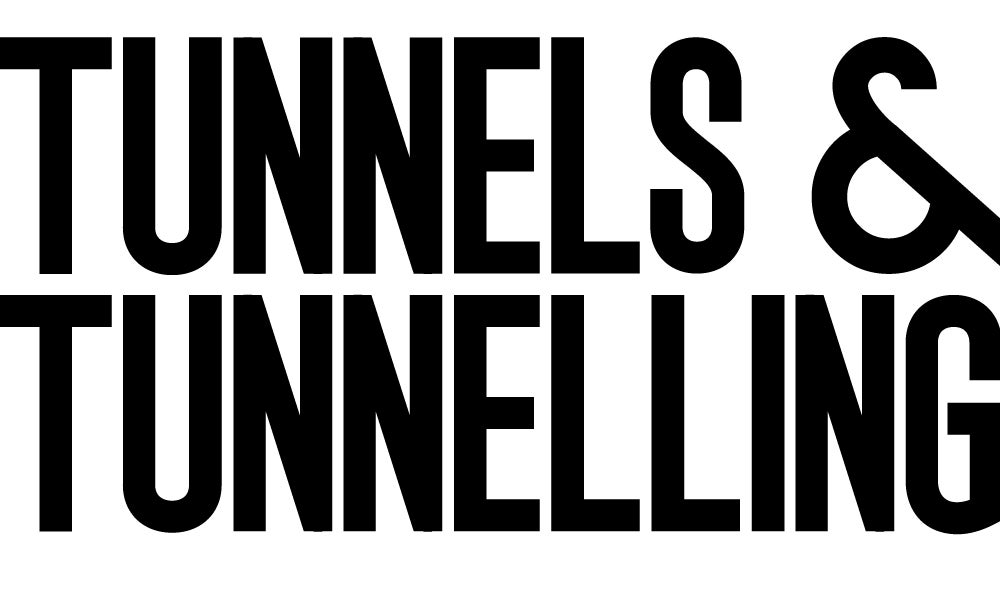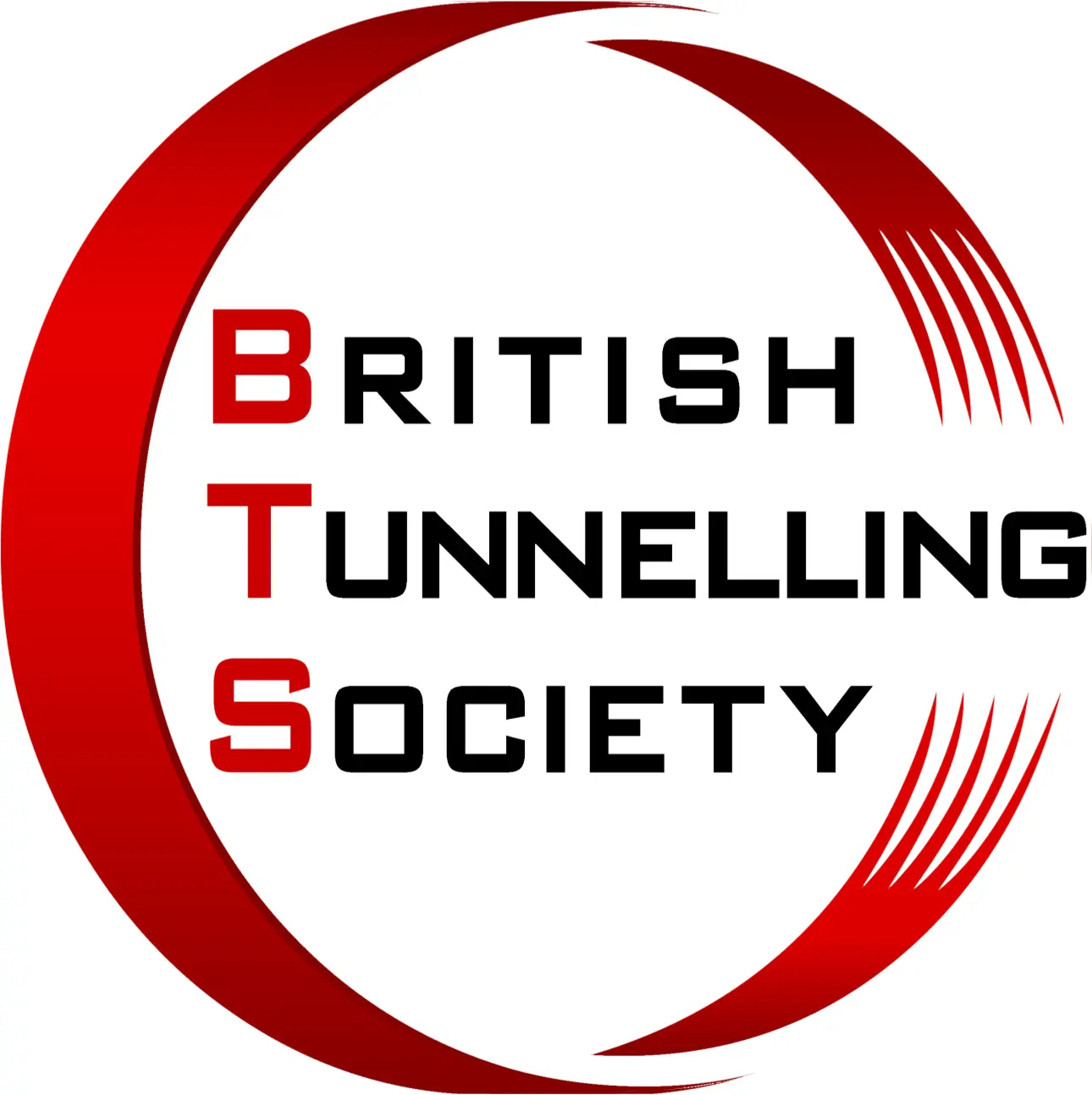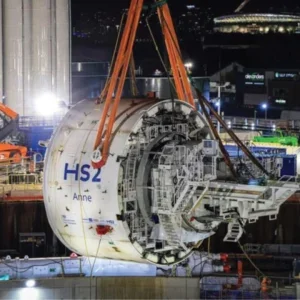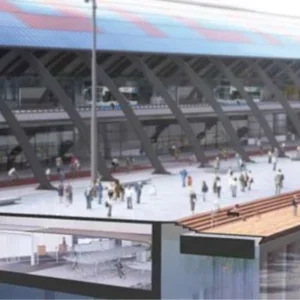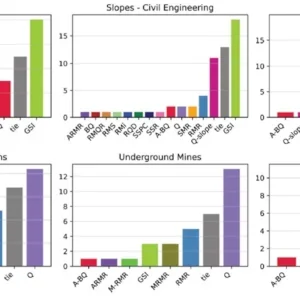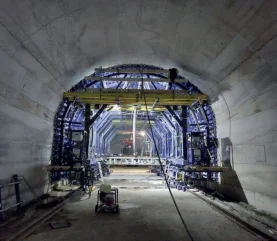
Overcoming various logistical hurdles, above and below ground, had to be achieved to enable timely execution of final concrete lining works in part of the tunnels of Madrid’s new Line 3 extension project. A tight schedule also had to be met and, of course, high technical standards satisfied by the chosen solution, which was elected to be the use of a modular, flexible formwork traveller system.
The construction site had limited space. Consequently, there were the logistical challenges to negotiate on the surface before the formwork traveller could be lowered underground to help the final lining of a 1.4km-long portion of the mined metro tunnel. The solutions found allowed the formwork system to be transported into and moved around the restricted site, and stored.
Following above-ground pre-assembly, the 7.5m-long formwork traveller was then lowered through a narrow shaft, and then moved on steel wheels into position for the lining works.
The existing line (Linea 3) runs north-south through the heart of the Spanish capital, and extends from Moncloa, at its northern end, to Villaverde Alto, at the southern.
At the north end, Line 3 interchanges with Line 6 (at Moncloa), and the western terminus of Line 4 (at Arguelles). The line has numerous other interchanges en route south, again crossing Line 6 (at Legazpi).
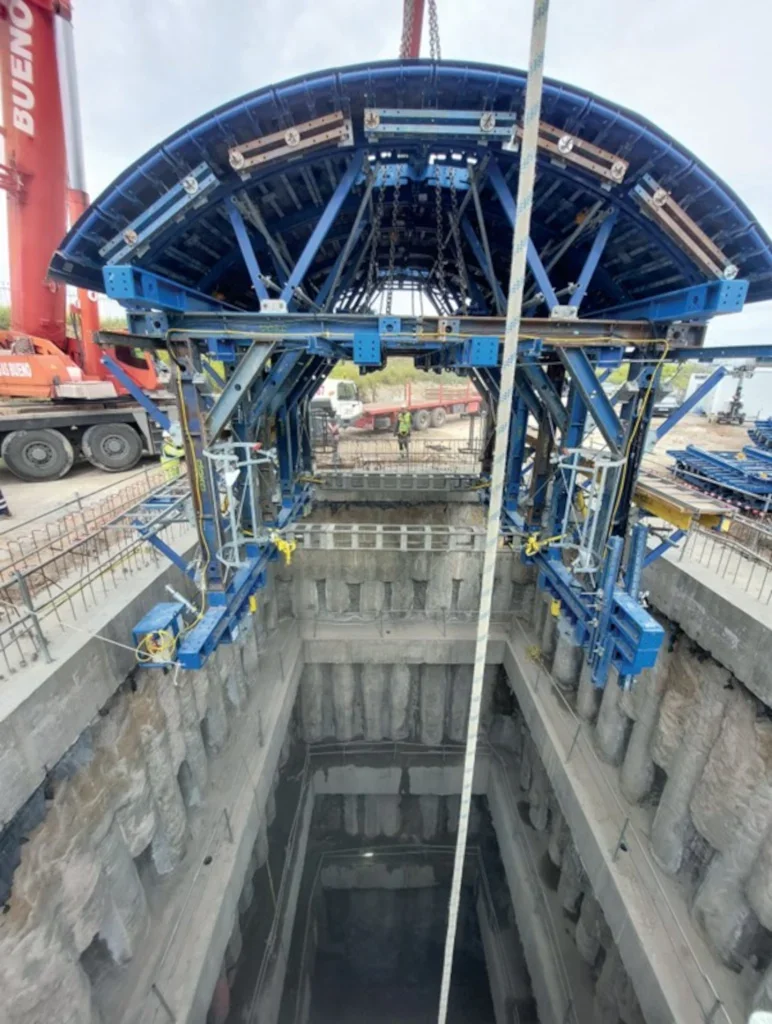
The southern extension of Line 3 will take the metro line from Villaverde Alto station to El Cesar, which is an intermediate station on the self-contained loop that is Line 12, in the south west corner of the capital.
There is an existing, single interchange on the loop, at Puerta del Sur station in the north portion which ties into Line 10 and thereby the rest of the metro network.
The Line 3 extension will be the Line 12 loop’s second tie-in to the city’s wider metro system.
In late 2021 a consortium of Ossa, Azvi, and Cotodisa was awarded the construction contract for the 2.7kmlong extension to Line 3. Main tunnel construction was underway in 2023, along the weaving tunnel alignment. To deal with space restrictions above and below ground, the logistical solutions developed also needed to deliver underground construction efficiency for the final lining works.
The chosen system was a formwork traveller supplied by Doka and used on just over half of the mined tunnel. The traveller included a modular, heavy duty SL-1 supporting system, including steel panels and additional transverse struts which meant wall anchoring was not required for the formwork. The section height and width were 6.1m and 7.8m, respectively
Operating to a daily cycle time, after concreting the struts were removed by forklift, opening up the arched passageway below the formwork to construction traffic. Having come down into the tunnel pre-assembled, the entire system could move forward – on the steel wheels, rolling directly on the concrete floor – as part of the rapid cyclic operations. This meant no rail fixing to the floor was needed for the system move forward. Additionally, a built-in turntable permitted fast adjustments in curved sections of tunnel.
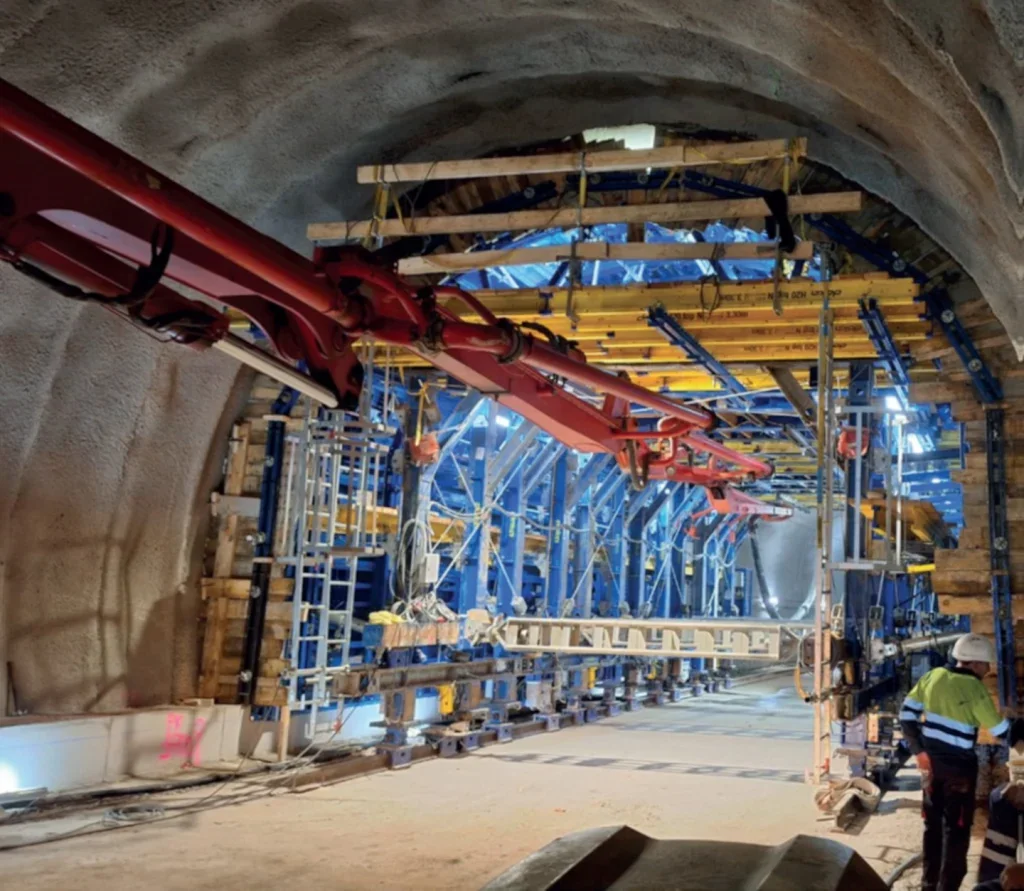
With logistics a principal constraint, Doka Spain’s project manager, Raul Eickelberg, said in a statement. “The modular design of our SL-1 system was particularly advantageous, allowing us to manage the space efficiently.”
Madrid Metro’s Line 3 Extension site manager, Gonzalo Soubrier, said that the system “provided the robustness and flexibility we needed.” He added that the experience brought by the formwork team was “invaluable in overcoming the project’s challenges.”
The metro extension is due to be completed later this year.
